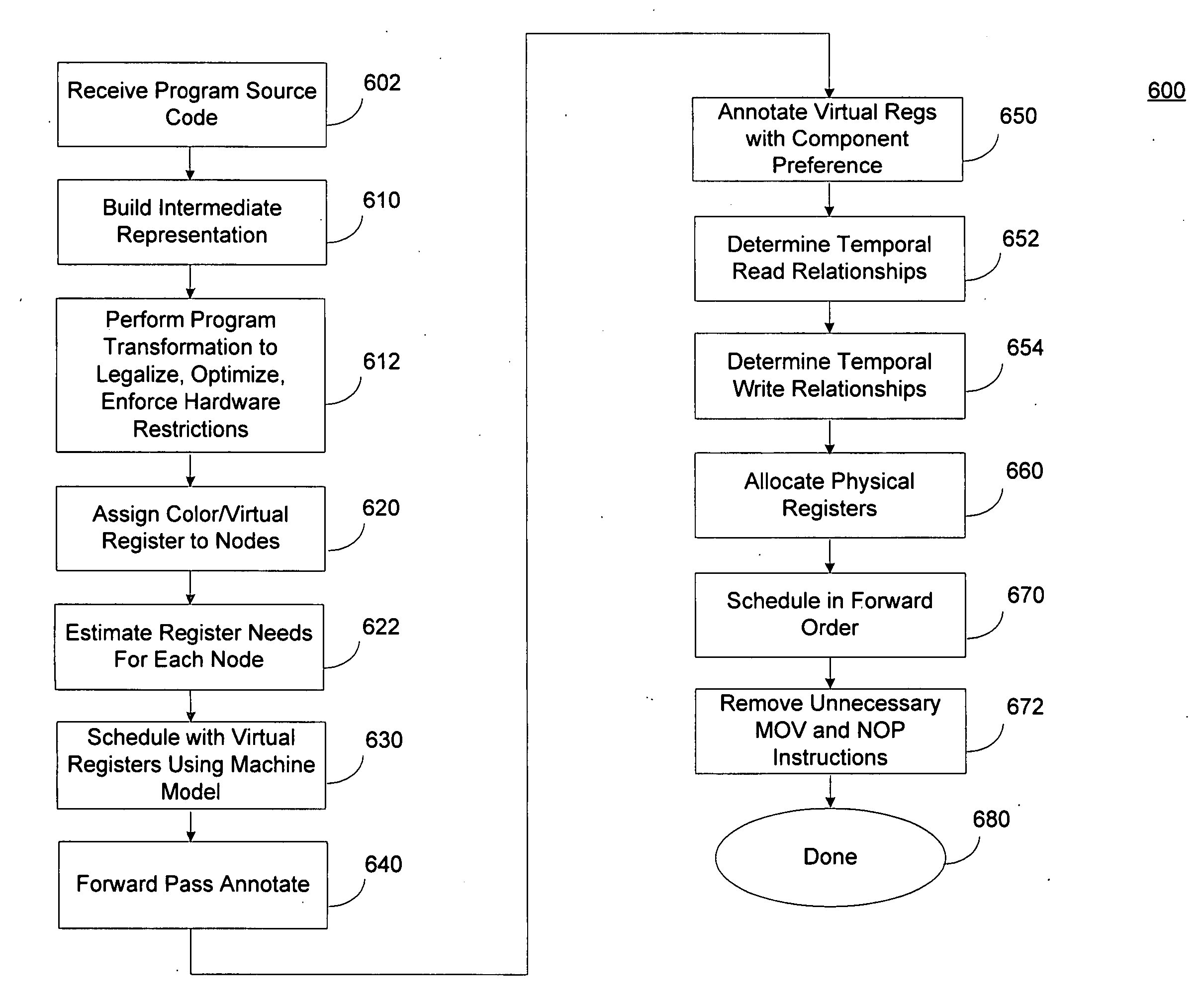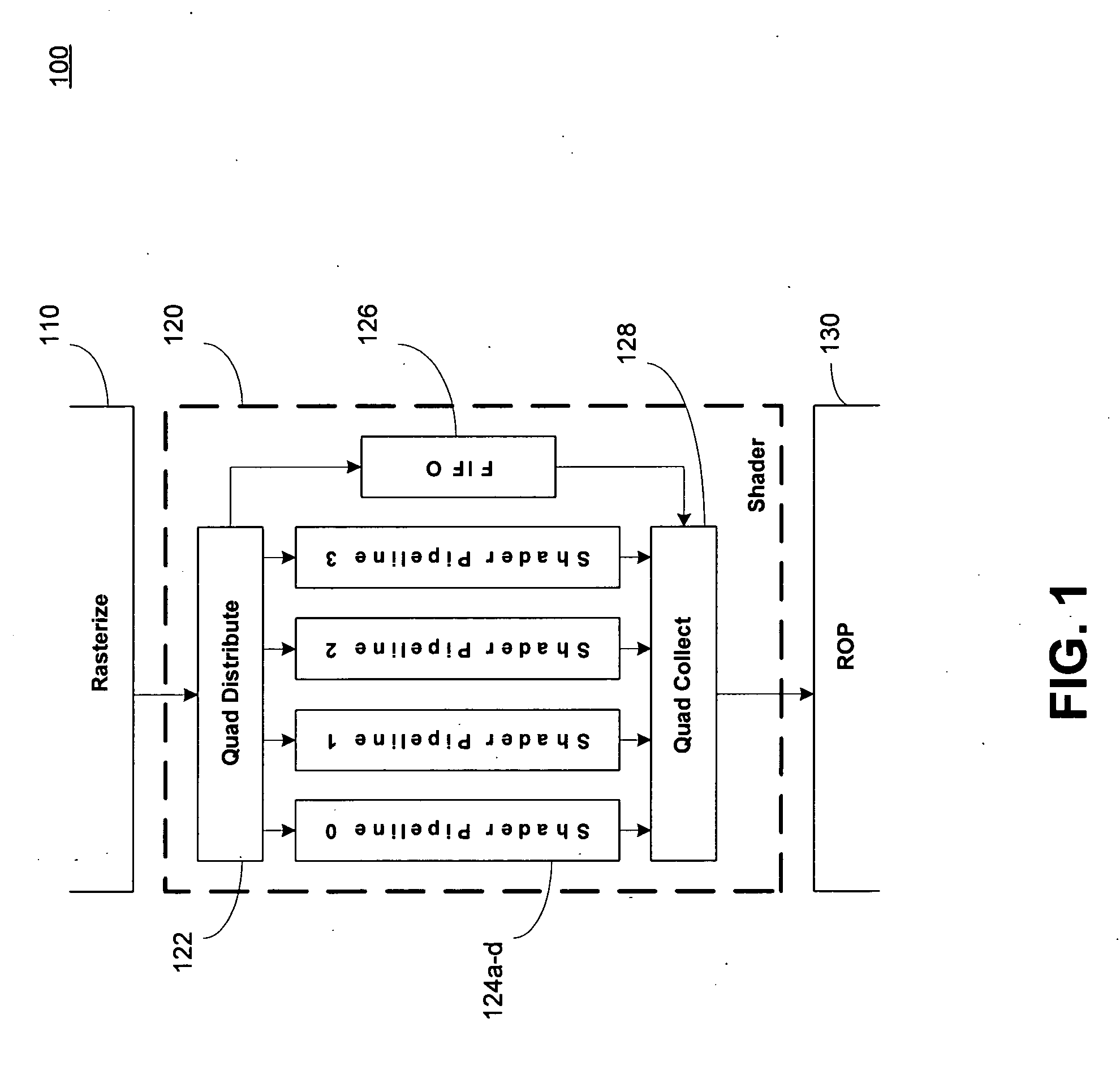Method and apparatus for register allocation in presence of hardware constraints
a hardware constraint and register allocation technology, applied in the field of electronic processing, can solve the problems of limiting processing capabilities, program execution time typically limited, and hardware architecture performance eventually approaching limitations, so as to reduce the number of active registers, reduce conflicts, and minimize the number of processor passes used
- Summary
- Abstract
- Description
- Claims
- Application Information
AI Technical Summary
Benefits of technology
Problems solved by technology
Method used
Image
Examples
Embodiment Construction
[0022] Hardware architectures have hardware constraints that can affect the processing capabilities of the architecture. Some of the constraints can be fixed while other constraints may be dynamic. For example, the number of clock cycles used to execute a particular instruction may be a fixed constraint that is not subject to optimization. In another example, the number of registers allocated to a particular process may be dynamically assigned, and the manner in which registers are allocated can be optimized to optimize a particular performance metric, such as execution time.
[0023] A parallel processing hardware architecture having a pool of registers that are shared among the various parallel processing paths can optimize program execution within the various processing paths, in part, by optimizing the register allocation. The compiler used to translate the high level language to a code operated on by the processing paths can control register allocation. The compiler can be config...
PUM
 Login to View More
Login to View More Abstract
Description
Claims
Application Information
 Login to View More
Login to View More - R&D
- Intellectual Property
- Life Sciences
- Materials
- Tech Scout
- Unparalleled Data Quality
- Higher Quality Content
- 60% Fewer Hallucinations
Browse by: Latest US Patents, China's latest patents, Technical Efficacy Thesaurus, Application Domain, Technology Topic, Popular Technical Reports.
© 2025 PatSnap. All rights reserved.Legal|Privacy policy|Modern Slavery Act Transparency Statement|Sitemap|About US| Contact US: help@patsnap.com



